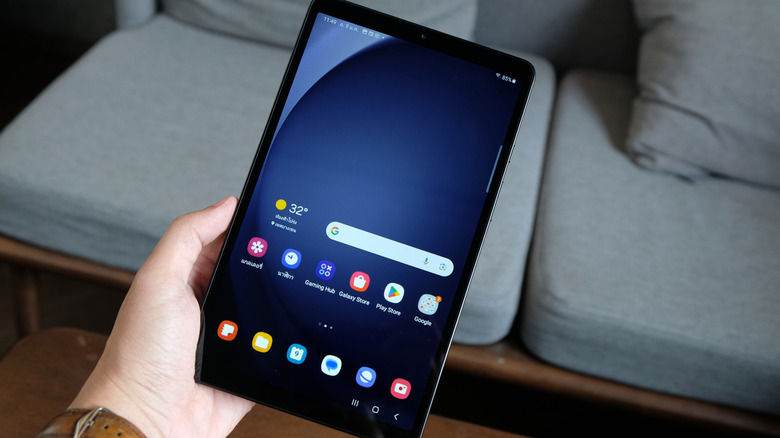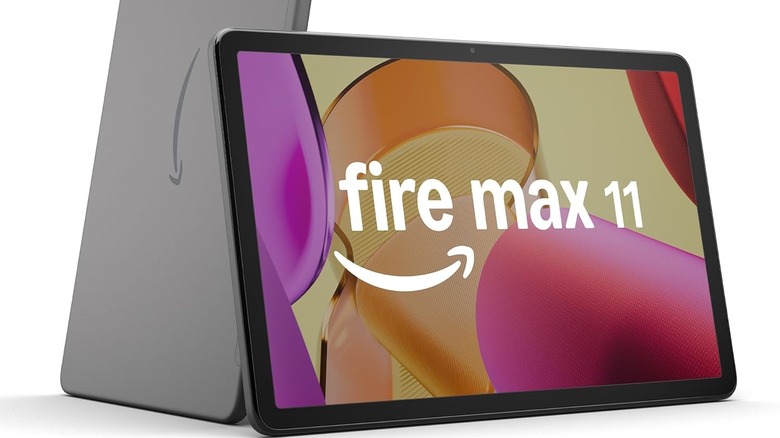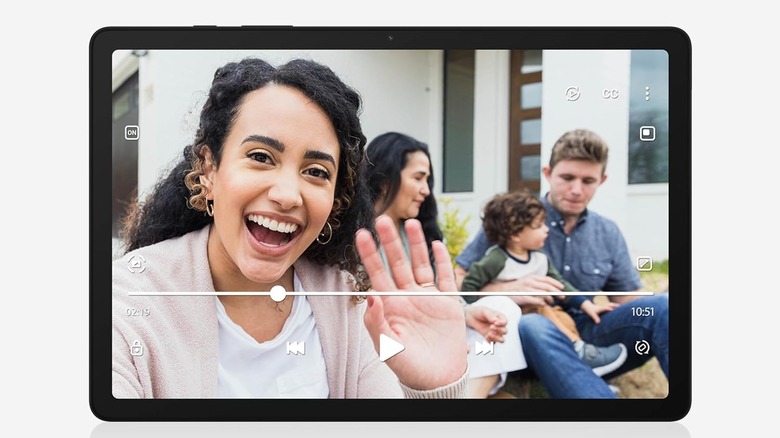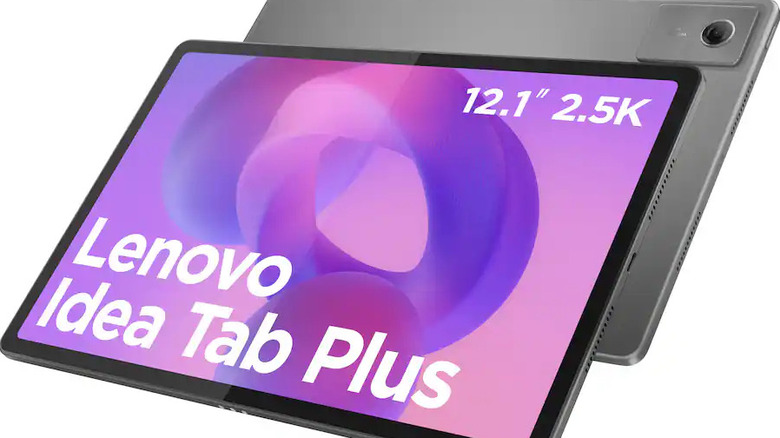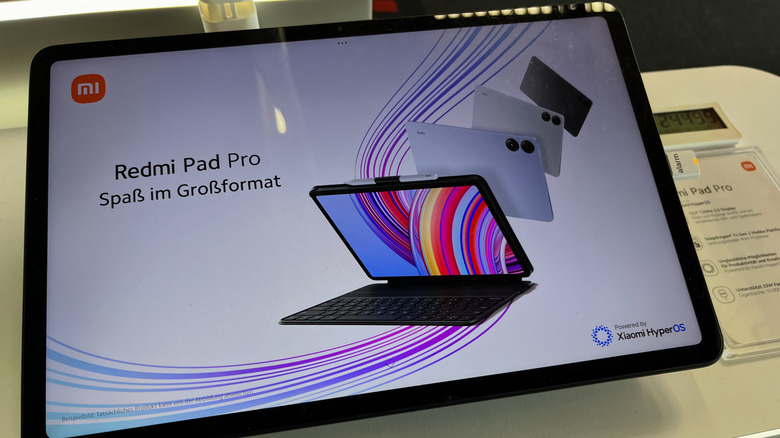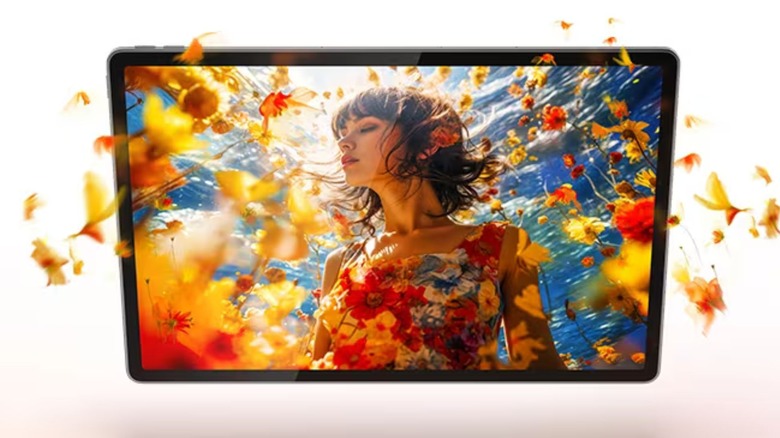4 Cheaper Android Tablet Alternatives To The iPad In 2025
We may receive a commission on purchases made from links.
If you've ever owned an iPad, you're familiar with its sleek design, sharp display, smooth performance, and price tag that's attached. However, not everyone wants to be locked into the Apple ecosystem, or needs to spend that kind of money to get the benefits of owning a tablet. Maybe you're after a device that's easier on your budget, gives you expandable storage, and uses the versatile Android system. The good news? You don't have to sacrifice quality to step outside the Apple ecosystem.
Today's tablet market is full of capable contenders that deliver long battery life, crisp screens, and reliable performance for a fraction of the iPad's price. One of the best options if you don't want an iPad is the Samsung Galaxy Tab A9+. It's an affordable 11-inch tablet that combines a vibrant display with the convenience of Google Play. Or take the Amazon Fire Max 11, this tablet punches above its weight with strong battery endurance and a sharp panel, making it a perfect streaming device. So let's take a look at several iPad alternatives and break down their strengths and their shortcomings, so you can make an informed decision. Whether you want a tablet to watch movies, read, or for work, you might be surprised at how much power and value you can get from these cheaper options.
Amazon's Fire Max 11
The Amazon Fire Max 11 brings some welcome upgrades over Amazon's earlier tablets. Its 11-inch display with 2.4 million pixels offers sharp visuals for streaming, reading, or browsing, and the metal body of Fire Max 11 feels more premium than the past plastic designs. Amazon claims up to 14 hours of battery life under ideal conditions, which is impressive on paper. The real-world users generally note that it can handle a full day of moderate use (videos, web, books) without issue. The inclusion of Wi-Fi 6 and a fingerprint sensor boosts its appeal in the budget tablet market.
Still, its strengths are balanced by some clear compromises. The software environment, Fire OS, is clearly tuned toward content consumption and Amazon's ecosystem. That alone limits the flexibility for users who want full access to Google Play or more advanced productivity tools. Reviewers have pointed out that for work tasks such as document editing, multitasking, and deeper apps, the Fire Max 11 feels constrained due to software limitations.
Accessories like the stylus and keyboard are serviceable and well-made, but not world-class. The trackpad, for instance, has been criticized for causing accidental taps and for having small keys. In short, the Fire Max 11 is a perfect alternative to the iPad for media consumption, reading, and light productivity. It's a budget-friendly option, as long as you're willing to accept some compromises in terms of versatility and software freedom.
Galaxy Tab A9+
Samsung's Galaxy Tab A9+ delivers a lot of value in the under $200 price category. Its 11-inch LCD screen with a 90Hz refresh rate makes scrolling and video smoother than many budget tablets that are stuck at 60Hz. This is especially noticeable when switching between apps or reading. The audio setup is also a highlight with quad speakers that offer surprising loudness and decent clarity, especially for watching content or streaming. The build feels solid, too. It's lightweight and made with well-finished materials, which makes this tablet easy to carry around. Plus, the battery is decent: The 7,040 mAh cell generally handles a full day of mixed usage.
That said, this device isn't without its drawbacks. In our review of the Galaxy Tab A9+, Christian found the charging to be a bit slow at 15W. He also noted that the camera system isn't great, producing bland images, even in well-lit conditions. Outdoor visibility can be a challenge, too, as the screen tends to wash out under strong sunlight or glare. Finally, some lower-end configurations, such as the one with 4GB RAM and 64GB of storage, have been described by some users as laggy or insufficient for heavier multitasking.
If you want a capable mid-budget tablet for streaming, reading, or media, the Tab A9+ is a strong pick. But if you expect rapid performance for gaming, outdoor use in bright light, or need fast charging, you'll be making some trade-offs.
Lenovo Idea Tab Plus
The Lenovo Idea Tab Plus is an entertainment-focused tablet that combines power, design, and solid audio performance for the price. Featuring a large, 12.1-inch 2.5K display with a 90Hz refresh rate, it delivers sharp visuals and vibrant colors. It's perfect for streaming, casual gaming, or creative work. Powered by the MediaTek Dimensity 6400 processor, paired with up to 12GB of RAM and 128 to 256GB of storage, it handles multitasking and media-heavy applications with ease.
One of its standout features is a four-speaker system with Dolby Atmos support. It offers a rich, room-filling sound rarely found in tablets at this price range. The sleek aluminum unibody design adds a premium feel, and the tablet is available in multiple color options, allowing users to choose a style that best suits their taste. Battery life is strong, with a large 10,200 mAh battery supporting 45W fast charging, ensuring minimal downtime.
On the downside, its size makes it less portable than smaller tablets, and the lack of a high refresh rate may disappoint avid gamers or users seeking ultra-smooth visual motion. Camera performance is modest, serving only the basic needs such as video calls or document scanning. Overall, Lenovo Idea Tab Plus is an excellent choice for users who prioritize media consumption, sound quality, and a spacious display in a well-built Android tablet.
Xiaomi Redmi Pad Pro
The Redmi Pad Pro (2024) is a mid-range Android tablet that stands out with its large 12.1-inch screen and a smooth 120Hz refresh rate. The screen provides sharp visuals and decent outdoor visibility, with support for Dolby Vision to enhance color and contrast. Its metal unibody design adds durability and a premium feel that is uncommon in the $250 price category.
Under the hood, the tablet is powered by the Qualcomm Snapdragon 7s Gen2 processor, coupled with up to 8GB of RAM and 256GB of internal storage. This configuration handles everyday tasks, media streaming, and light multitasking comfortably. However, it may struggle with heavier gaming or intensive productivity work. It runs Xiaomi's HyperOS based on Android 14, providing a clean interface with some AI-enhanced features.
This Redmi tablet features quad speakers with Dolby Atmos and Hi-Res audio support. Battery life is good, with a 10,000mAh cell delivering roughly 12 hours of video playback, and 33W fast charging. The cameras, both front and back, are very basic with just 8MP. They're enough for video calls, but limited when it comes to photography. Overall, the Redmi Pad Pro balances display quality, performance, and battery life in a mid-range package. While it doesn't compete with high-end tablets for gaming, it offers a compelling alternative for media consumption and everyday tasks.
How we selected these products
Our selection process focused on finding tablets that deliver performance value and reliability at a budget-friendly price. We conducted detailed research using expert reviews, verified users' insights, and performance data to identify models that balance quality and affordability. Every tablet featured comes from a reputable brand known for consistency and strong customer support. We also applied a $300 price cap to ensure accessibility, prioritizing devices that offer dependable performance, durability, and long-term satisfaction without stretching your budget.
